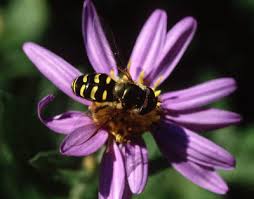Overview
Plants that reproduce by seed include cone-bearing plants and flowering plants. They can live in many different environments, because seeds store food separately for the plant embryo, to be used when the plant has the right conditions to sprout.
Formation of Seeds
Seed structure is similar for both cone-bearing plants and flowering plants. The plant embryo is surrounded by a food supply, and both are protected by a seed coat. Many different types of seeds have structures that help them be moved to other places where they can sprout. For example, some seeds have wings that help them drift on the wind, while others have a sticky covering so they can be transported by birds or other animals. Still others are contained in fruit, so that the seeds are dropped where the fruit is eaten.
Early Cone-Bearing Plants
Many different types of cone-bearing plants are found in fossils. Some species of these plants, known as gymnosperms, still exist. One of the most unusual plants grows from one large cone into two long leaves. Others are like palm trees, except they have one large cone. They are called cycads, and grow in tropical and subtropical biospheres. The ginkgo tree is a very sturdy plant with fan-shaped leaves. Living trees and fossils of ginkgo trees are so similar that it is called a “living fossil”. They have been cultivated throughout China, Japan, North America, and Europe. Ginkgo trees are so hardy that six of them survived the atomic bomb at Hiroshima, and they are often planted in urban areas where other trees do not survive.
Conifers
Conifers are the most common types of cone-bearing plants, with more than 500 different species. Most are evergreen, with long, needlelike leaves that are coated with a waxy surface. They live in a wide range of climates, in mountainous areas, in sandy soil, and in the temperate rain forests of the Pacific Northwest. Different types of conifers include pines, spruces, hemlocks, sequoias, cedars, and yews.
Flowering Plants
Many plant species reproduce by flowers and seeds. Flowers attract flying insects, such as bees and moths, and birds such as hummingbirds, which feed on nectar and transport pollen to fertilize other flowers. Seeds develop and mature into fruit, which attracts other birds and animals to eat them. The seeds are transported further to germinate later. Flowering plants are called angiosperms because their seeds are enclosed deep within the flower rather than being exposed as in cone-bearing plants. Many different species of angiosperms exist, and they are often divided into groups by how long they live. Annual plants grow, flower, and die within a year, while biennial plants grow, flower, and scatter seeds for another year. Perennial plants have longer life spans and dormant periods.
Interested in science tutoring services? Learn more about how we are assisting thousands of students each academic year.
SchoolTutoring Academy is the premier educational services company for K-12 and college students. We offer tutoring programs for students in K-12, AP classes, and college. To learn more about how we help parents and students in Redwood City, CA: visit Tutoring in Redwood City, CA




